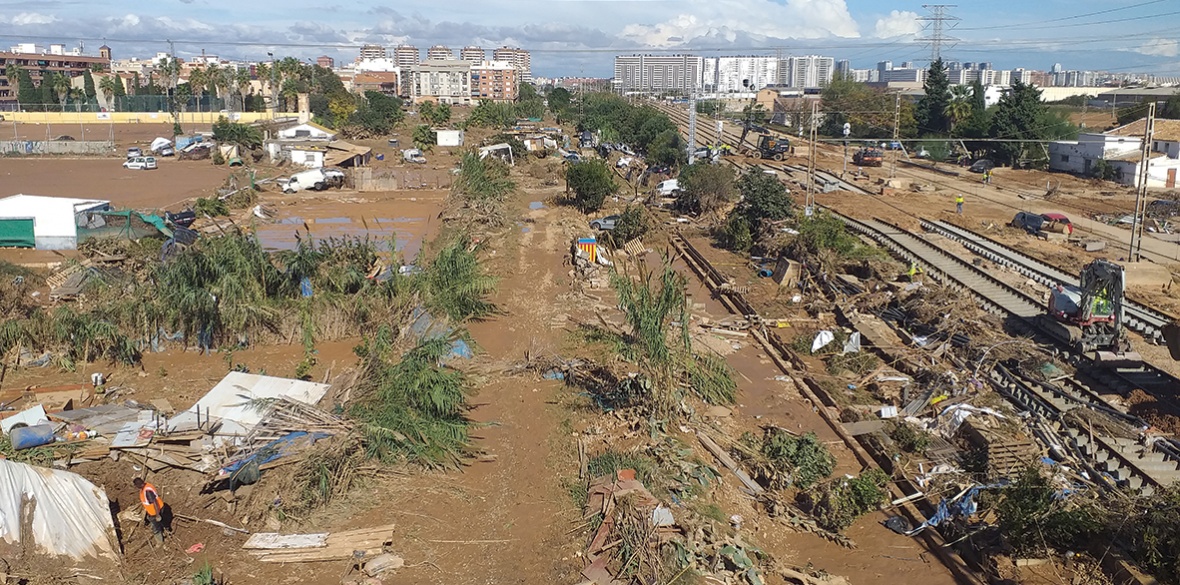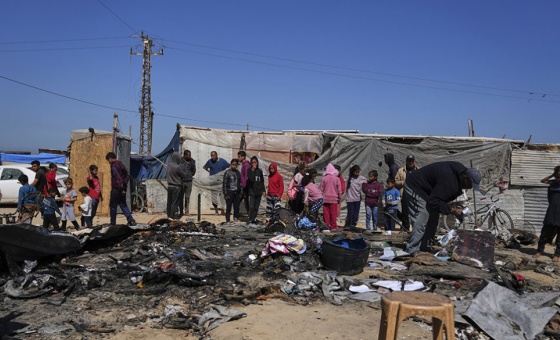This is the last article you can read this month
You can read more article this month
You can read more articles this month
Sorry your limit is up for this month
Reset on:
Please help support the Morning Star by subscribing here
LAST month UN secretary-general Antonio Guterres warned that the worsening climate crisis meant the world was on course for 3.1°C temperate rise.
His analysis is broadly in line with the consensus among climate experts.
Earlier this year the Guardian surveyed 380 climate scientists who have worked with the authoritative Intergovernmental Panel on Climate Change (IPCC) since 2018, with almost 80 per cent of the respondents expecting at least 2.5°C of global heating by 2100. Almost half anticipated at least 3°C.
For those who take a close interest in the topic these are frightening predictions. However, the problem, as many climate experts have long noted, is the seriousness and urgency of climate change can be difficult to get across to the wider public.
The climate crisis is also a crisis of communication. At least to human eyes, the crisis is a remote threat, glacially paced and difficult to discern.
The evidence is generated by often technical, inaccessible research and unemotional, carefully worded scientists. And its global nature means many are simply defeated by the overwhelmingly size of the emergency and the level of change required.
On top of all this, the powerful fossil fuel industry, through political lobbying and much of the corporate media, sows confusion and ignorance, promoting false, often dangerous, solutions.
All of which makes the new book chapter written by Professor Stefan Rahmstorf a welcome addition to the climate literature.
Published in the book 3 Degrees More, Rahmstorf — the co-head of the Research Department on Earth System Analysis at the Potsdam Institute for Climate Impact Research — sets out what a 3°C warmer world will look like.
He starts with the historical context: “One must go back about three million years, to the Pliocene, to find a similarly high global temperature. This already indicates that large parts of today’s biosphere are not adapted by evolution to such a warm Earth. Many species would not survive it.”
There will be an increase in strong tropical storms, with an attendant increase in heavy rainfall. However, conversely, the climate crisis will also mean more periods of drought.
Rahmstorf sets out a possible “nightmare scenario” brought on by rising temperatures: “crop failures simultaneously hitting the large granaries of the northern hemisphere: western North America, Russia, western Europe and Ukraine.”
Harvest failures occurring in multiple regions at the same time would lead to widespread famine, the Met Office warned in 2017.
According to IPCC estimates there will be a sea level rise of one metre (over three feet) between 2100 and 2150, though if emissions remain high then two metres by 2100 cannot be ruled out, Rahmstorf notes.
With 130 coastal cities larger than one million inhabitants, along with nuclear power stations, ports and airports, he describes a one metre rise as a “disaster.”
At 3°C the rising sea levels will erode the Earth’s coastal zones “washing away beaches, threatening all infrastructure with ever-increasing storm risks, and making permanent coastal cities as we know them today almost impossible to sustain.”
Rahmstorf’s research focus is the Atlantic Meridional Overturning Circulation (AMOC), a vast a system of ocean currents that brings heat into the north Atlantic. Working a bit like a central heating system, it has a huge influence on the European climate.
Speaking to the Guardian in October, he noted there are indications the AMOC has been slowing down in the last 60-70 years due to global warming.
“My risk assessment has really changed,” he says. Until a few years ago the IPCC estimated the probability of the AMOC crossing the tipping point — a critical threshold that leads to large and usually irreversible changes — this century at less than 10 per cent. However, he explains a number of recent studies suggest the AMOC could indeed cross the tipping point and collapse this century. Rahmstorf now believes there is a 50/50 probability of this happening.
The impact of a collapse of the AMOC would be immense. He notes AMOC breakdown occurred during the last ice age. “The effects include a cooling of the northern hemisphere, particularly northwestern Europe,” including Britain.
One of the studies he cites, conducted by researchers from the Institute for Marine Atmospheric Research at Utrecht University, warns in the 100 years after the collapse of the AMOC “the temperature in several European cities will drop between 5°C and 15°C.”
This, of course, throws a serious spanner in the works of attempts to adapt to the climate crisis.
“Most people are finally beginning, at least mentally, to prepare for a hotter world. That’s good,” Emeritus Professor Rupert Read, co-director of the Climate Majority Project, tells me. “Unfortunately however it’s insufficient. In places like the UK, we have to prepare both for a possible hotter climate AND for a possible much cooler climate. That’s really hard!”
“It’s not impossible though,” says Read. “It just means our medium and long-term planning has to be truly precautious and robust. For example: if you are planting trees, plant some native species, and some Mediterranean alternatives, and some Scandinavian varieties too.”
Back to Rahmstorf’s book chapter. “Without immediate, decisive climate protection measures, my children currently attending high school could… experience a 3°C warmer Earth,” he concludes.
This world “would be full of horrors for the people who have to experience it… I am not sure whether the more or less civilised coexistence of humans we enjoy now will endure under such conditions.”
If you are in any doubt what he means, he clarifies his point: “I consider a 3°C world to be an existential threat to human civilisation.”
Scary stuff. But what makes Rahmstorf’s warning so significant, so worrying, is the fact he isn’t a wayward radical climate activist spewing unevidenced claims but one of the world’s pre-eminent climate scientists, working at one of the world’s top climate research institutes.
Despite the existential danger, Rahmstorf has not lost all hope. He ends his chapter by highlighting the work of the young people involved in the Fridays For Future movement, arguing “Climate protection must be given the highest priority.”
The book’s overall conclusion, written by Klaus Wiegandt — founder of the Forum for Responsibility — agrees a mass mobilisation of civil society is vital.
However, he also notes the importance of public knowledge, arguing that the lack of public awareness and discussion about the reality of a 3°C world means governments have been allowed “to pursue half-hearted climate policies with impunity.”
Equally, Wiegandt maintains “comprehensive education of the world’s population about the devastating consequences that decades of completely inadequate climate protection policies will cause would have led to the development of massive resistance.”
3 Degrees More: The Impending Hot Season and How Nature Can Help Us Prevent It can be accessed online for free at tinyurl.com/ThreeDegreesMore.







